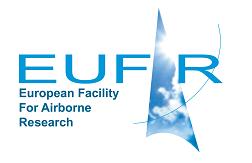Project

ICELAND_DEBRISFLOWS- A Study of the Hazard and Geomorphic Change Caused by Debris Flows in Iceland
Abstract
The aim of this EUFAR project is to better understand the dynamics and behaviour of debris flows through the study of their geomorphometry. This will help to assess the potential hazard posed by these flows and also contribute to a better understanding of their contribution to post-glacial hillslope degradation.
One of the main risks to population in Iceland, particularly in the fjords, is the action of debris flows. These are mixtures of boulders, sediment and water that surge downslope after prolonged/intense rainfall or sudden snowmelt. Metre-size boulders can be carried in debris flows, and cause damage to property and, in some cases, loss of life. To better understand the risk posed by these flows, both the physics of their motion and the role of the geological setting in initiating slope instability need to be understood. We propose to collect high resolution topographic data in Skagafjordur and Skutulsfjordur, which were previously surveyed in 2007, and from the slopes of western Skagafjordurr. By studying previously surveyed sites, we will measure accurate quantification of sediment movement rates and volumes. By studying the slopes in Skagafjordur, we will be able to compare different geological settings. These data will help us develop a new numerical model of debris flow activity, and help us to understand the long-term slip and creep processes that contribute to slope instability. We will create difference maps (showing deposition and erosion of sediment) for Skagafjordur and Skutulsfjordur and for Skagafjordur we will accurately characterise the morphology for comparison with data from Conway et al (2010) for Skagafjordur and Skutulsfjordur.
Details
| Keywords: | EUFAR, ARSF, EUFAR12_02 |
|---|---|
| Previously used record identifiers: |
No related previous identifiers.
|
Related Documents
| ICELAND_DEBRISFLOWS project documentation |
| EUFAR Web page |
